Aquifers are an important natural resource, providing large stores of naturally filtered groundwater. Unfortunately, not all aquifers can provide usable amounts of groundwater, and the natural filtration process isn’t always enough to remove contaminants in groundwater. Left unchecked, those contaminants can present an environmental hazard – but aquifer testing can help evaluate an aquifer’s usefulness and potential contaminant content. Read on for a quick guide to aquifer testing, which we offer as part of our site characterization services.
Aquifer Testing 101
What Is an Aquifer?
Aquifers serve as major storehouses for groundwater, one of our most valuable resources. Aquifers are essentially bodies of sediment or porous rock in which groundwater is present and can flow. Think of a sponge. Like soil and rock, a sponge has openings through which water can enter, move, and be stored.
What Is Aquifer Testing?
Not all aquifers have enough connected pores and fractures for water to easily travel, meaning they may not be a good source for water to use. In addition, soil and bedrock through which water moves to reach an aquifer are not always enough to filter out major contaminants. For this reason, environmental professionals must employ aquifer testing. Aquifer testing accomplishes two goals. First, it estimates what are known as the aquifer’s “hydraulic properties.” These properties include, for example, the aquifer’s transmissivity, or rate of flow, and how much water can be produced. Second, it assesses the chemical quality of the groundwater in an aquifer zone.
Aquifer Testing Methods
Aquifer testing requires an existing water well or installing one or more new wells if no wells are present. For estimating groundwater hydraulic properties, environmental professionals rely on two distinct aquifer testing methods. These methods assess aquifers using different types of hydraulic stress. The fundamental methods are pumping tests and slug tests:
- Pumping Test: Environmental professionals use pumping tests in a well to stress an aquifer. The well pumps out water, extracting water to place stress on the aquifer’s infrastructure to measure how much water the aquifer can produce. There are three types of pumping tests:
- Constant Rate: A well is pumped at a constant rate (example: 10 gallons per minute) to see if the well can continue to produce water for a long enough time to be useful.
- Constant Head: A well is pumped in a way to keep the lowered water level at the same depth by varying the pumping rate as needed to evaluate what rates the well can maintain continual pumping in a stable condition.
- Step Testing: This is a series of constant rate tests. A well is pumped at increasing rates over time to see at what level the lowered water level in the well becomes stable to determine what the maximum sustainable water production rate will be.
- For all these tests, measurements can be made of changes in water levels in nearby wells to see how far away the effects of pumping the well will reach.
- Slug Test: Unlike a pumping test, which tests the overall properties of a large portion of an aquifer, a slug test evaluates the part of an aquifer in the immediate vicinity of the well being tested. Slug testing involves rapidly changing the well’s water level, either by removing or adding large quantities of water, and then measuring the change in the well’s water level over time. Because this method only tests a limited portion of an aquifer, slug testing is usually recommended for a number of wells in the aquifer to get a more complete picture of the aquifer’s hydraulic parameters.
For determining an aquifer’s water quality, environmental professionals will collect samples of the groundwater from a well for analysis. Samples can be collected during pumping tests, or simply by pumping water from a well without performing hydraulic testing. The samples are sent to a laboratory for analysis of any known or suspected contaminants. Contaminants can be chemicals (as leaks or spills from a gasoline or diesel fuel storage tank, for example) or biological (such as fecal coliform from sewer or septic tank leaks).
Our Other Site Characterization Services
Aquifer testing is just one of a number of key site characterization services offered at EWI. Our associates work closely with our clients to define a comprehensive approach to site characterization, using proven sampling techniques and equipment to investigate environmental issues. In addition to aquifer testing, we offer the following site characterization and remediation services:
- Strategic planning and agency negotiation
- Development of data quality objectives and work plan preparation
- Remote sensing and interpretation (GPR, electrical resistivity, seismic)
- Vapor sampling (soil gas, sub-slab, and indoor air)
- Vapor intrusion evaluation, modeling, and remediation
- Hydrogeologic investigations
- Nature and extent determinations of contamination in soil, sediment, surface water, and groundwater
- Monitoring well installation and sampling (passive and active techniques)
- Groundwater modeling
- Sinkhole evaluation and mitigation
- Solid 3D modeling
- Real-time analysis of data
- Data validation
- Statistical analysis
- Data management and reporting
- Optical Image Profiler (OIP), Laser-Induced Fluorescence (LIF), Hydraulic Profiling Tool (HPT), and Membrane Interface Probe (MIP) techniques for detailed evaluation of lateral and vertical extents of petroleum and other chemicals in areas of impacted soil
_____
For best results, and to satisfy requirements of most regulatory agencies, aquifer testing must be conducted by a licensed geologist or environmental professional. Only trained geological professionals can offer the sort of testing and analysis that provides meaningful results. Fortunately, EWI can help.
Do you have further questions about aquifer testing? Give Environmental Works a call. Environmental Works is on call 24 hours a day, 365 days a year, and can respond at a moment’s notice, no matter the situation. We have in-house experts ready to help walk you through the specifics of your organization’s testing needs. When you’re ready, you can contact EWI online or call 877-827-9500 for more information. In an emergency, call our emergency hotline at 877-827-9500 for fast and reliable help immediately.



